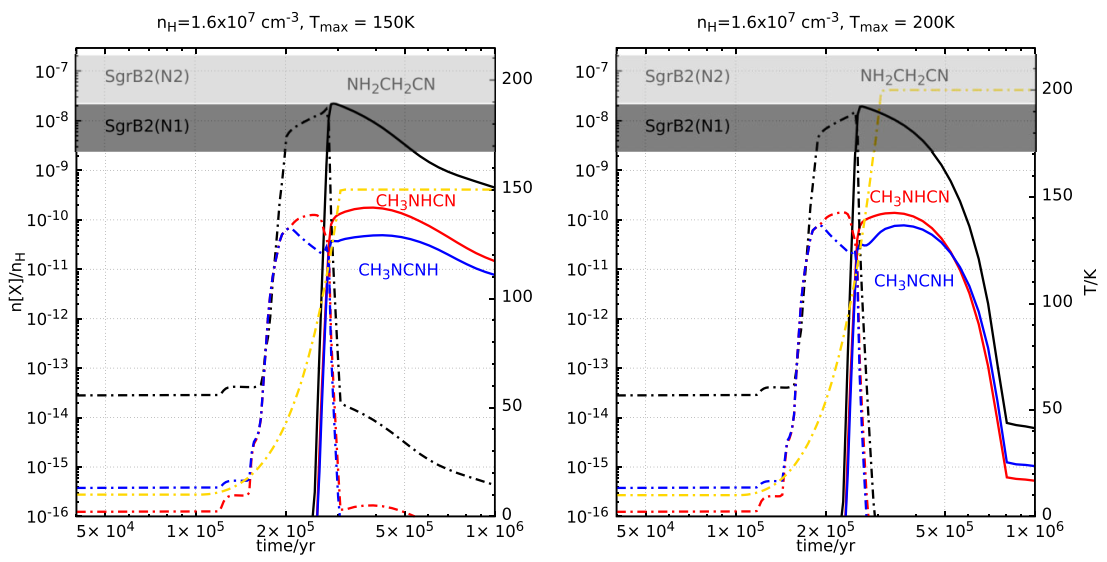Aminoacetonitrile (NH2CH2CN, AAN) has been proposed as a potential precursor to glycine in the interstellar medium (ISM), making it crucial prebiotic molecule in the study of life’s origins. As its special bifunctional building blocks can undergo cyclization reactions, allowing rapid advance toward prospective heterocyclic units, such as, adenine, which is a crucial component of the genetic material.
It is worth noting that the isomers (CH3NHCN and CH3NCNH) of AAN possess chirality, which is closely related to life. Therefore, AAN and its isomers may play a key role in the chemical origins of interstellar life.
Recently, researchers from the Astrochemistry Group of Xinjiang Astronomical Observatory (XAO), Chinese Academy of Sciences, along with their collaborators, outlined a chemical reaction network for AAN and its isomers by quantum chemistry, the ab initio methods. They applied the three-phase chemical code to simulate the formation and destruction of AAN and its isomers in hot cores.
The study was published in the Monthly Notices of the Royal Astronomical Society.
The researchers applied hot cores with varying ultraviolet (UV) radiations to analyze the chemical evolution of AAN and its isomers in different environments. The research results successfully reproduce the observational results and elucidate the mechanisms of their chemical evolution in hot cores, providing a basis for future interstellar molecular searching efforts.
According to their findings, AAN and its isomers are mainly produced through free radical reactions on grain surfaces. Furthermore, the study suggests that surface chemistry contributes to these molecules during the early evolutionary stages of stars. Subsequently, they are released back into the gas phase and observed.
The study speculates that there is a possibility for NCCN and AAN to react with each other, eventually leading to the formation of adenine in hot cores. However, further investigation is required to understand the efficiency of grain surface reactions in adenine formation, through theoretical calculations or laboratory experiments in future research.

The calculated abundances of AAN and its isomers in the gas phase and on grain mantles, including surface and icy mantle, are plotted versus time for warm-up stages in hot core models.
The gray and light gray rectangles represent the observed abundance with ± a factor of 3 uncertainty for AAN in Sgr B2(N1) and Sgr B2(N2), respectively. Yellow dotted lines denote temperature profiles.